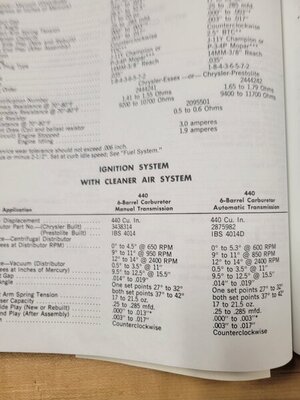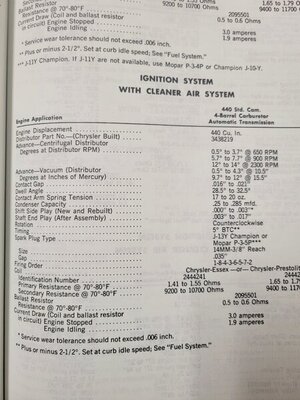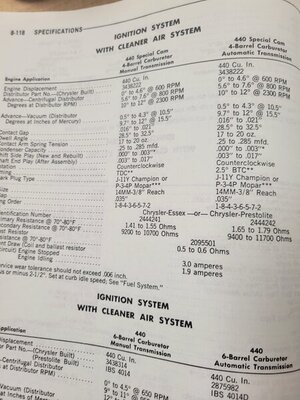M/car,
Idle timing is a most understood topic, even amongst seasoned mechanics. The lower the idle vacuum, the more timing that is a needed
at idle. Unless you are using a programmable ign 'box' [ & you don't need one ], the best way to give the engine the timing it WANTS is to use a dist with adjustable vac adv. Very cheap from Summit, $140. Set the Allen Key fully CW.
YOU DO THE INTERNAL CENTRI CURVE LAST, NOT FIRST. Connect the VA unit to manifold vacuum { MVA} [ ported is USELESS ]. See link below. My engine idles @ 48* BTDC. Yes, 48, not a misprint.
D. Vizard has authored 30+ auto books, forgotten more than most will ever know.
Below is from a
carb book, not an ign book. Hmm....
'The optimum idle advance is typically about 35-40* for a short cammed street engine & though not commonly realised as much as 50* for a street/strip engine'.
And from PHR magazine', Nov 04, while reviewing a new Crane dist:
' At idle....the amount of advance to most effectively utilize the air & fuel entering the engine can be as much as 50-55*. This is handled by the vac adv....By taking the time to hook up the VA to a manifold source you can get that big cam to idle as it were 20* less than it really is'.
Cannot stress enough how important this is to getting optimum carb performance & idle. Mopar missed the boat on MVA, GM used it & got it right.
More on MVA, scroll down to post #6.
www.hotrodders.com/forum/vacuum-advance-hooked-up-directly-manifold-bad-47495.html


















